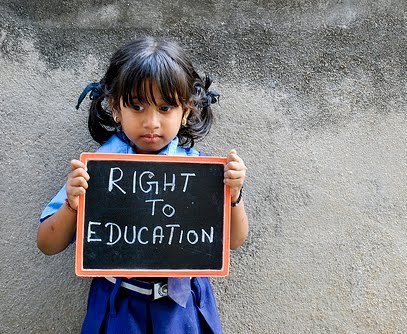New Delhi: The lack of quality education in the remote corners of Bastar is not surprising as many children often become helpless and their education has been disrupted owing to local conflicts between Naxals and security forces. Several schools were demolished during Salwa Judum because the armed forces frequently occupied these concrete school structures to operate from within, resulting in the armament of schools. Along with local issues such as lack of access to roads, electricity, and basic necessities, the pandemic added major troubles, as children were forced to hike through mountains to reach network zones due to a lack of networks in the plain regions.
Several researchers have concluded that the school buildings are resourceful in providing tactical support for the parties and thus are an easy target. As a result, many schools were demolished in the 2000s, and the two generations of Adivasi children were deprived of education. However, in 2018, the district administration collaborated with the villagers residing in the conflict regions and reopened 93 schools. Currently, around 97 schools have been reopened and the schools are now operated by community youths who have been appointed as teachers.
This scenario is widely frequent in several conflict regions of Bastar. However, the students are still deprived of qualitative education; there is an urgent need for upgrading the concrete structures of schools along with the education. Several NGOs and the state government have worked to upgrade disarmed structures for the smooth operation of schools in these sensitive regions, however, the children still face a lack of qualitative education in certain conflict regions. “Although the schools in the conflict regions have reopened due to local problems in the regions, sometimes, if there is a conflict between Naxals and security forces, the schools get closed often interrupting the education of children,” a local teacher from Bijapur told The Sunday Guardian.
An Annual Project Report-Shiksharth Trust has pointed out significant challenges in Sukma, Chhattisgarh, such as inaccessibility of roads, along with the geo-politics nature of the armed conflict.
The report has clearly stated that many older kids are also engaged in household chores like harvesting, cattle rearing, forest produce collections, and so forth. Many children also accompany their families during migration for work or visiting other villages to attend social responsibilities. Also, the level of community engagement is a major deciding factor in the operations of schools. Several non-governmental organisations (NGOs) are working to promote the development of children and to assist in the restoration of school infrastructure in order to provide them with a high-quality education.
Another key factor to keep in mind is that in these remote areas, the attendance of children at schools is dependent on mid-day meals. Several children, whose parents are out in the fields, have been seen leaving the school premises after their midday meals. Also, many parents, who are out working in the field, leave their children at school because there is no one to look after them at home. “Even if the students visit schools, it is primarily due to mid-day meals, otherwise the attendance will be lower. The road connectivity is poorer and the recruitment of the teachers is also lower. Since most of the students, residing in the conflict zones, speak local languages, the teachers recruited here in the local schools don’t speak their languages, and as a result, the education isn’t very impactful,” a social worker told this paper.
Also, the campuses of many government residential schools are often surrounded by staple mahua and tendu trees of Bastar. These schools, which provide education to children, are frequently located in distant areas. However, many students have not returned since the schools reopened, and the growing number of absentees is a big concern. There have been several reports which often claim that the majority of the children do not return to school because they are recruited by Maoists. Because the youngsters, who have been back in their rural villages for about a year and a half, are more vulnerable to Maoist recruitment, the pandemic has contributed to huge concerns in these isolated areas. The goal of many government-run residential educational institutions is to relocate students from rural areas to more accessible and developed locations.
On Independence Day, 2020, Chhattisgarh CM Bhupesh Baghel announced the “Padhai Tuhar Para” scheme, under which mohalla classes are held as an alternative to online education in rural places. Adivasi mohalla classes, on the other hand, are heavily reliant on communal administration. For many of these children, the collaborative effort between Adivasi teachers and parents appears to be their only opportunity for education.
Bastar lacks quality education, school structures
- Advertisement -

